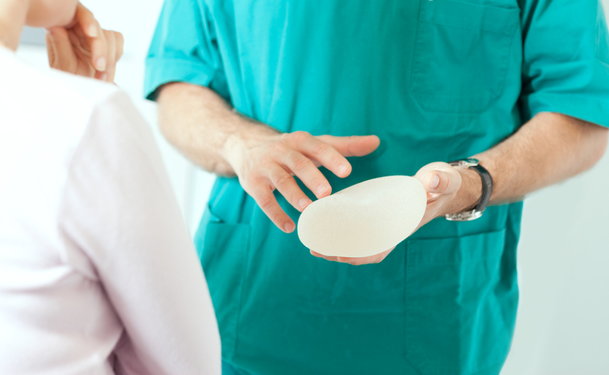A common misconception regarding breast implants is that they must be replaced every 10 years, as if implants are like car tires that need to be rotated every 6,000 miles. While it’s true that any foreign material in the body will not last forever, there is no reason to replace breast implants as long as you remain happy with the cosmetic results and do not experience any issues.
It is, however, important to recognize why you may need to replace your implants and what you can expect of the replacement process. Here are some guidelines regarding breast implant replacements.
Common reasons for breast implant removal and replacement
1. Rupture: The most common reason for implants needing to be changed is implant rupture. There are numerous studies that peg the chance for rupture at around 1% per year. What that equates to is that in 20 years, there is a 20% chance of rupture and/or the need to change your implant.
2. Wrinkling: Implant wrinkling is another reason to consider implant replacements. Wrinkling can occur as textured implants settle or drop over time.
3. Symmetry Issues: As years pass, implants may take on a lopsided appearance and you may begin to notice a disruption of symmetry, which might prompt you to seek a correction.
4. Capsular Contracture: Capsular contracture is the most common reason for re-operation on augmentation patients, and may or may not necessitate implant replacement. It is characterized as an abnormal response of the immune system to a foreign material in the body. This occurs when the collagen-fiber capsules tighten and squeeze the breast implants. This condition can be very painful and it is a medical complication that may distort the look and feel of the breast implant and the breast. Capsular contracture can occur at any time after the original augmentation. Some occur very early (months) after the original augmentation, while others may not manifest until many years later.
5. Patient Dissatisfaction: Another potential reason for the need or desire for breast implant replacement is that the patient may no longer like the cosmetic appearance of the implants. This could be due to reasons including weight loss, pregnancy, or other physical issues with implants that may be too large. This is one of the main reasons why patients should take as much time as needed when deciding on implant size prior to their surgery.
Saline versus silicone: Which type is more durable?
While both implant types have a relatively low rupture rate, silicone gel breast implants tend to be slightly less prone to rupture when compared with saline implants. Several research studies have shown that saline implants have a deflation rate of approximately 1% per year among patients who have post-operative MRI scans.
Similar studies indicate silicone gel implant rupture rates of about 0.5% with patients who have post-operative MRI scans. It is important to note that silicone implant rupturing is very difficult to detect without an MRI, so some cases may go unreported.
Implant positioning
Submusclular implants may be preferable to subglandular placements as implant is covered by the muscle. The muscle coverage reduces the visual effects of wrinkling while also providing an extra source of protection for rupture due to pressure. Additionally, submusclular placement is less prone to capsular contracture.
How is breast implant replacement surgery performed?
The extent and duration of your breast implant exchange depends on a myriad of factors. One technique involves a simple exchange of one or both of your implants with a possible change in the type of implant, i.e., saline or gel, textured or smooth.
There may be a need for an adjustment or even a removal of the capsule already formed from your previous surgery. Implants may also shift from their current position above or below your pectoralis muscle.
Oftentimes during an implant exchange, the patient benefits from a mastopexy (breast lift). This may or may not require new implants or a tissue matrix, such as Strattice, which can be brought in to give you added support. Any of these techniques can be used or combined as well.
Breast implant replacement cost
The cost of replacing implants may be a bit less costly than the initial breast augmentation surgery, assuming there is no evidence of capsular contracture and the breasts are soft. This is because your surgeon can use the same capsule without having to do any manipulation. The presence of significant asymmetry, capsular contracture, drooping, or implant malposition may result in the revisionary surgery being more expensive than the original procedure. This is due to the added surgical time and complexity of the operation compared to the first surgery.
The final cost of surgeries are dependent on many factors including geographic location, exact details of your surgical procedure, and the chosen surgeon. Patients need to educate themselves and should consult with a surgeon about the breast implant replacement process.
by Cameron Craven, MD. Dr. Craven is a board certified plastic surgeon currently practicing at Austin-based Westlake Dermatology & Cosmetic Surgery.
Reviewed September 2016



